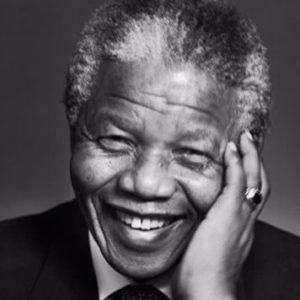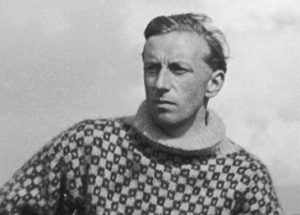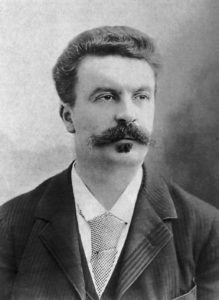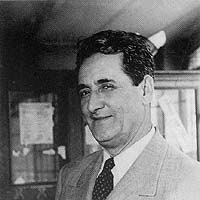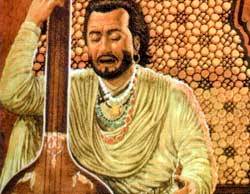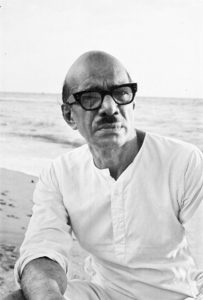We have decided to create the most comprehensive English Summary that will help students with learning and understanding. we are also creating The Happy Prince Summary in This Article
The Happy Prince Summary in English by Oscar Wilde
The Happy Prince by Oscar Wilde About the Author
Oscar Wilde (full name: Oscar Fingal O’Flahertie Willis Wilde) was an acclaimed poet and playwright. Bom in Dublin, Wilde attended Trinity College, Dublin and Magdalen College, Oxford. Throughout the 1880s, Wilde experimented with various forms of writing and established himself in the literary and artistic circles in London. During the 1890s, he became one of London’s most acclaimed playwrights. His unmatched wit and flamboyant style set him apart from his contemporaries. Some of his most popular plays include, A Woman of No Importance, Lady Windermere’s Fan and The Importance of Being Earnest (this was his most popular play).
Wilde wrote only one novel, The Picture of Dorian Gray. When it was first published, the novel was not well received by critics. However, over the years, it has come to be regarded as a classic. Wilde also wrote short stories and essays. Wilde was an important figure in the movement called ‘Aestheticism’ and remained committed to its principles throughout his life. His unconventional perspective on life and style of writing made him one of the most well known names in English literature.
| Author Name | Oscar Wilde |
| Born | 16 October 1854, Westland Row, Dublin, Ireland |
| Died | 30 November 1900, Paris, France |
| Spouse | Constance Lloyd (m. 1884–1898) |
| Movies | Wilde, Dorian Gray, An Ideal Husband, A Good Woman |
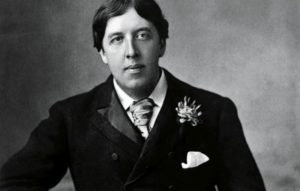
The Happy Prince Summary in English
Standing high above a city is a statue of the Happy Prince. The beautiful statue has sapphire eyes, is covered all over with thin leaves of fine gold, and has a large ruby on the hilt of his sword.
One night, a swallow sets out to join his friends in Egypt and flies over the city. Tired from having flown all day, he wonders where he can rest for the night. He sees the statue of the Happy Prince and decides to rest between the statue’s feet. Happy with his beautiful place of rest, he prepares to sleep. Just then, a large drop of water falls on him. He looks up to the sky but sees that it is clear of rain clouds. However, drops of water continue to fall on him. The swallow looks up at the statue and realises that its eyes are full of tears. He is filled with pity.
The swallow asks the statue who he is and the statue says he is the Happy Prince. The swallow asks him why he is crying. The Prince says that when he was alive and had a human heart, he did not know what sorrow was because it was not allowed to enter his palace. He lived and died in happiness. After he died, his courtiers placed his statue high above the city from where he can witness all its ugliness and misery. Even though his heart is made of lead, he cannot help but weep.
The Happy Prince says that on a little street far away is a poor house. Through its window, he can see a woman seated at a table. Her hands are red, coarse and pricked all over by needles because she is a seamstress. She is embroidering flowers on a gown for the most beautiful of the queen’s maids of honour, to wear to the Court ball. In a comer is a bed upon which lies her little boy who is ill with fever. He asks his mother for oranges; but as she has nothing to give except river water, the boy is crying. He asks the swallow to take the ruby from his sword and give it to the woman.
The Happy Prince’s sad face moves the swallow and he agrees. He takes the ruby out of the sword and flies over the city, past the cathedral and the palace. He sees a beautiful girl come to balcony of the palace with her lover. The swallow hears her say that he hopes her gown with the embroidered flowers is ready in time for the ball. She remarks that seamstresses are lazy.
When the swallow arrives at the woman’s house, he finds that the boy is tossing in bed with fever and the woman has fallen asleep, exhausted. He places the ruby on the table beside the woman’s thimble and on his way out, fans the boy’s forehead with his wings. The boy feels better instantly and goes off to sleep. The swallow flies back to the Prince and remarks that he feels quite warm, in spite of the cold weather. The Prince says it is because he has done a good deed. The swallow then falls asleep.
The next day, the swallow goes to the river for a bath. Happy at the prospect of going to Egypt that night, he visits all of the city’s monuments. At moonrise, he goes back to the Prince and announces that he is leaving for Egypt. The Happy Prince tells the swallow that far away in the city, he sees a young man in a garret, leaning over desk covered with papers. There is a bunch of withered flowers in a glass by his desk. The man is trying to complete writing a play for the Director of the Theatre but he is too cold and hungry to write anymore. The swallow offers to stay one more night to help. The Prince asks the swallow to take one of his sapphire eyes from his statue to the man. The man can then sell the sapphires to the jeweller and buy some firewood to keep warm. The swallow is sad to pluck out the Prince’s eye, but does as he is told.
The swallow flies to the man’s house and enters it through a hole in the roof. The man is resting with his head in his hands and does not hear the bird. When the man looks up, he finds the sapphire between the withered violets. He thinks that some admirer has left it for him and is happy that now he can finish writing his play.
The next night, the Prince again asks the swallow to stay for the night. The swallow says that soon it will begin to snow and he needs to go to Egypt where the weather is warm. The Prince, however, tells him that in the square below is a little matchgirl whose matches have fallen into the gutter. She is crying because if she goes home without money, her father will beat her. He asks the swallow to give the girl his other sapphire eye so that her father does not beat her.
The swallow plucks out the sapphire and drops it into the girl’s hands. She goes home happily, thinking that she has found a piece of beautiful glass. The swallow returns to the Prince and says that as the Prince is now blind, he will stay with him always. The next day, the Prince asks the swallow to fly over the city and tell him what he sees. The swallow follows this command and sees the rich making merry in their homes while the poor suffer in the streets. Under the archway of a bridge, he sees two little boys lying in an embrace to keep warm. The watchman drives the boys away into the rain. When he tells the Prince of his findings, the Prince orders him to take off the gold leaves, one at a time, and give it to the poor. The swallow picks the leaves one by one till the Prince begins to look dull and grey. The poor children however, grow happy because they now have food to eat.
Then it begins to snow and after the snow, the frost arrives. Though the swallow feels colder and colder, he does not leave the Prince. Eventually, he realises that he will die soon. He musters strength to fly to the Prince’s shoulder to bid him goodbye and asks to kiss his hand. The Prince says he is glad the swallow is finally going to Egypt. He thanks the swallow for staying so long and asks him to kiss his lips, as he loves the swallow very much.
The swallow says that he is not going to Egypt but to the House of Death. He then kisses the Prince and falls down dead at his feet. At that moment, the sound of something breaking comes from the statue: his heart of lead has broken. The next morning, the Mayor and Town Councillors notice that the statue of the Happy Prince looks shabby. They notice that the jewels and gold have been stripped off and the statue looks like that of a beggar. They notice the dead bird at its feet and make a note to declare that birds should not be allowed to die there.
The statue of the Prince is taken down. The Art Professor remarks that without its beauty, the statue is no longer useful. The statue is melted in a furnace but the broken leaden heart does not melt. The workmen in the foundry throw it on the heap of dust where the dead swallow is also lying.
God in Heaven asks an angel to bring Him the two most precious things in the city. The angel brings him the broken lead heart and the dead bird. God is happy and says that the little bird will forever sing in His garden of Paradise; and in His city of gold, the Happy Prince will praise God.
The Happy Prince Title
The title is an ironical one, as it suggests that the story is about a Prince who is happy. However, the readers soon realise that the Prince is not a human, but a statue. Since the statue is placed at a high point, he can see all the misery and sadness in the city, which makes him sad.
The Happy Prince Setting
The story is a fairy-tale set in a fictitious kingdom in Europe. The statue is set on a high point overlooking the city, and most of the events described take place outdoors.
The Happy Prince Theme
The story is based on the theme of charity and bridging the gap between the haves and the have-nots. It dwells upon the. way the rich perceive life as compared to the poor. It also highlights the fact that humans often value unimportant things, while ignoring valuable things like charity and kindness.
The Happy Prince Message
The message of the story is to become more sensitive towards those who are less privileged than us. It emphasises how one can lessen the suffering of others and bring about equality by sharing what one has. It also reminds us that having a warm, giving heart is more important than having a beautiful appearance.
The Happy Prince Characters
The Prince: The happy prince is not a real human being, but a handsome statue that sits high above the city. It is beautifully decorated with a golden coat and sapphire eyes. There are rubies on the hilt of his sword and he is admired by all. However, despite his wonderful appearance, the statue is unhappy. As a human, he rarely cried and never had a care in the world, but as a statue, he has the perfect vantage point from which to observe all the sadness and misery in the city. He is no longer the self-centred boy he used to be. Despite having a lead heart as a statue, he feels sorry to see the ugliness of human life that he had been oblivious to as a human. He is very charitable and giving, happily donating every part of his statue that has any value, such as the gold leaf, rubies and sapphires, so that it can help people in need.
The Swallow: The swallow is a happy-go-lucky bird at the beginning of the story, whose only concern is the journey he is looking forward to. He is in love with a reed (a river plant) and is disappointed when the reed doesn’t agree to fly away with him. However, he is a kind bird, and seeing the statue’s distress, he offers to help. In the process, he becomes the link between the prince and the people of the land. He helps the prince by taking each valuable item that the prince tells him to, and quietly giving it to people in need. He selflessly helps the prince, ignoring his own plans to fly to warmer climes for winter. As a result, he loses his life in the cold.
The Happy Prince Summary Questions and Answers
Question 1.
Describe the statue of the Happy Prince.
Answer:
The statue stood high above the city on a tall column. He was gilded all over with thin leaves of fine gold with two bright sapphires for eyes. A large red ruby glowed on his sword hilt.
Question 2.
Did the swallow belong to the city? How can you tell? Where was it going?
Answer:
No, the swallow did not belong to the city, as it is written that it flew over the city on its way to Egypt.
Question 3.
Where did the bird decide to stay for the night? Why?
Answer:
The bird decided to stay near the statue of the prince, because it was located on a tall column and the bird felt he would get plenty of fresh air there.
Question 4.
Why did the bird think he had a ‘golden bedroom’?
Answer:
The bird alighted near the feel of the statue of the Happy Prince, which was gilded all over with thin leaves of fine gold. That is why he felt that he had got a ‘golden bedroom’ to sleep in.
Question 5.
Why was the bird not able to sleep peacefully that first night?
Answer:
Just as the bird was about to sleep, he was disturbed by three tear drops that fell from the eyes of the statue. When he saw the tears running down the cheeks of the statue, he looked so beautiful in the moonlight that the bird was filled with pity and could not sleep.
Question 6.
Why was the statue of the Happy Prince weeping?
Answer:
The statue of the Happy Prince was weeping because when he had been alive, he had not known any sorrow. But after his statue had been erected, he was able to see all the ugliness and misery of the city, and even though he now had a heart of lead, he could still feel the pain, which made him cry.
Question 7.
Who does the Prince ask the swallow to deliver the red ruby to?
Answer:
The Prince asked the swallow to deliver the ruby to a poor seamstress whose son was very ill. The child was asking his mother for oranges, but she had nothing to give him but water. Since the statue’s feet were fixed to the pedestal, he could not deliver it himself, so he asked the swallow to do so.
Question 8.
Why did the swallow agree to deliver the ruby even though he wanted to join his friends in Egypt?
Answer:
The Prince looked so sad that the little swallow felt sorry for him and agreed to stay one night and be his messenger.
Question 9.
What were the things that the swallow saw on his journey to deliver the ruby?
Answer:
He saw the cathedral tower, the palace, the river, and the ships before coming to the poor woman’s house.
Question 10.
What made the sick boy fall into a deep, restful sleep?
Answer:
When the bird delivered the ruby, he flew gently around the bed of the sick boy, fanning the boy’s forehead with his wings. This soothed the boy and he fell into a deep, restful sleep.

